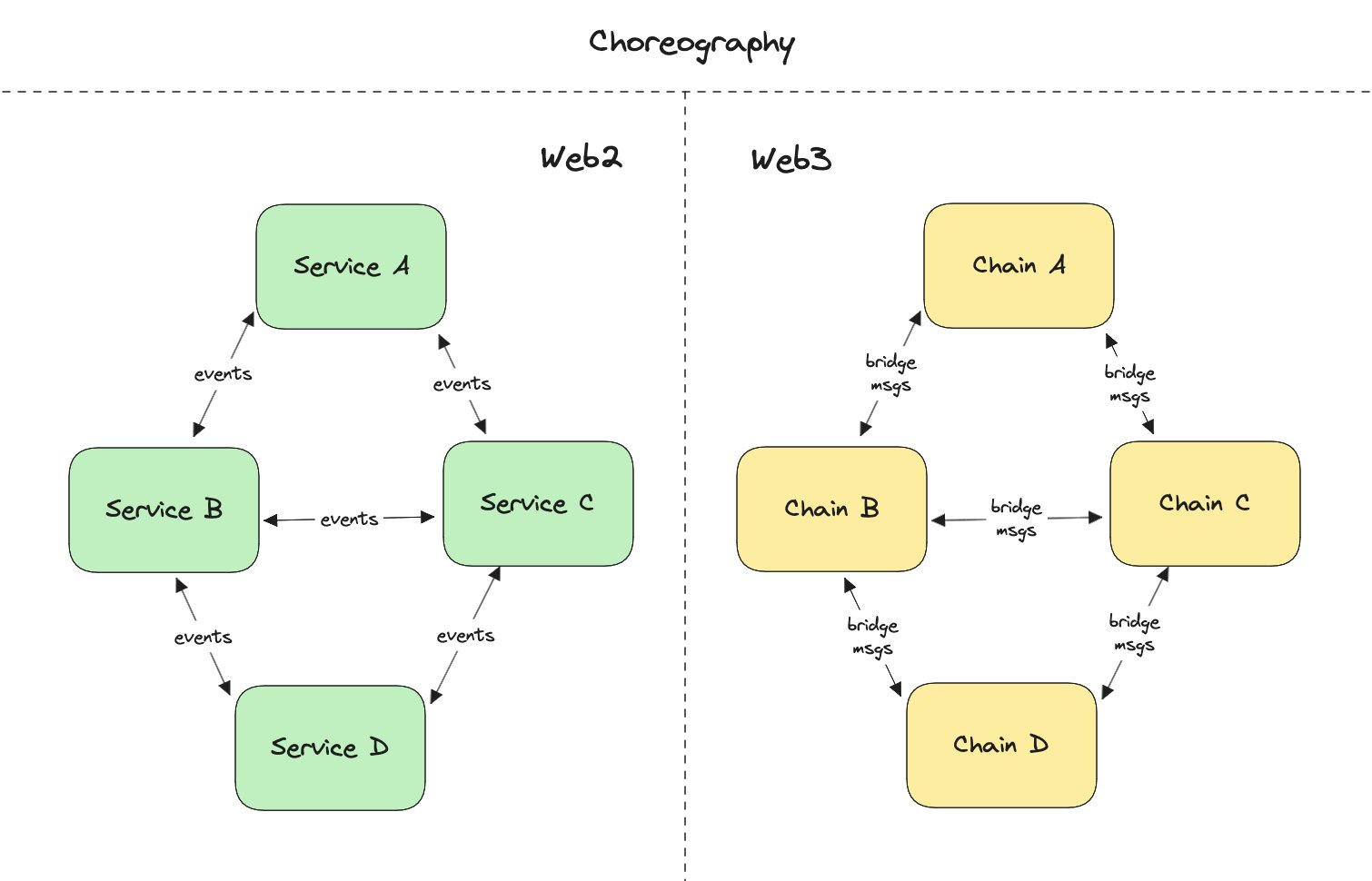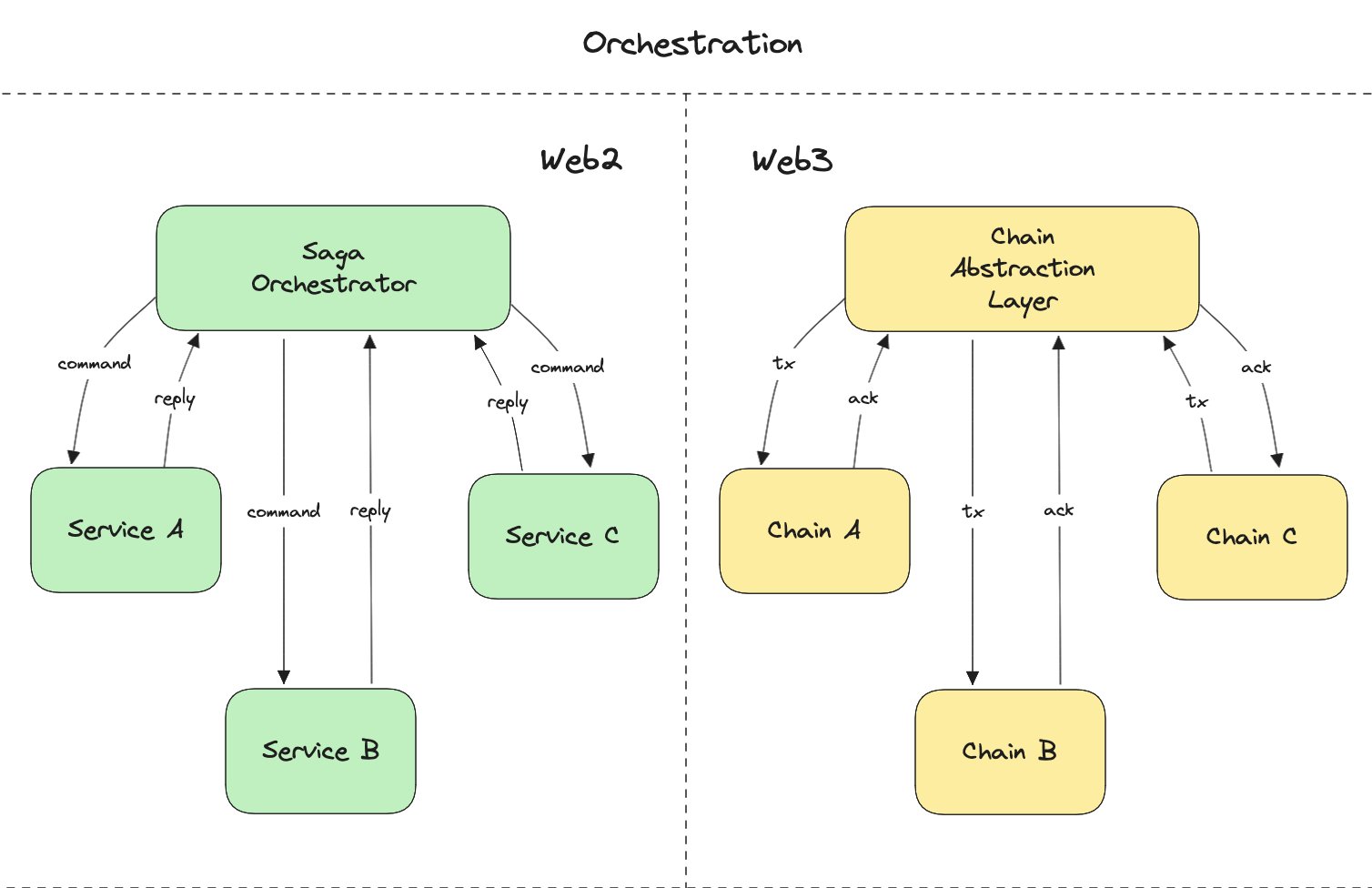1/9/2024
The Evolution of Interop
What if I told you the solutions to blockchain interoperability were discovered in the 1980s?
Back then, researchers at Princeton were solving a seemingly unrelated problem: how to manage long-running database transactions without locking up the entire system.
Their solution? The Saga Pattern. And it’s eerily similar to what’s happening in blockchain today.
The challenges faced by distributed databases decades ago mirror our current cross-chain communication problems. Both domains grapple with fundamental questions of coordination, consistency, and reliability across distributed systems. As blockchain networks multiply and interconnect, we’re seeing the same patterns emerge - and potentially, the same solutions.
Think about the parallel:
-
Then: How do we coordinate across multiple databases without global locks?
-
Now: How do we coordinate across multiple chains without sacrificing security or decentralization?
The evolution from monolithic databases to microservices mirrors our journey from single-chain applications to cross-chain protocols to chain abstraction protocols. And the solutions that emerged then might just hold the key to understanding our path forward.
The Origin of Sagas
The core insight in Saga Pattern was revolutionary: instead of trying to maintain one giant transaction, break it into a sequence of smaller, local transactions that can be coordinated through messages.
Each local transaction has a corresponding compensation transaction - essentially an “undo” operation. If anything fails midway, these compensation transactions execute in reverse order, bringing the system back to a consistent state.
Two Implementation Patterns
-
Choreography: Services communicate directly through events. Each service knows how to react to events from other services and what events to emit next.
-
Orchestration: A central coordinator manages the entire flow, tracking progress and handling failures by executing the appropriate compensation transactions.
This evolution from choreography to orchestration holds valuable lessons for blockchain interoperability. Direct message passing between chains (choreography) emerged first, but as complexity grows, we’re seeing the same push toward orchestrated solutions.
The Parallel Evolution
In distributed systems, we saw a natural progression:
-
Monolithic applications split into microservices
-
Simple service-to-service calls evolved into complex distributed transactions
-
Direct communication patterns gave way to sophisticated orchestration
Blockchain is following a remarkably similar path:
-
Single-chain dApps are expanding across networks
-
Simple bridge transfers are becoming complex cross-chain protocols

- Direct message passing is being supplemented by chain abstraction layers

Why Choreography Wasn’t Enough
The Web2 Story
Netflix was among the early adopters of microservices and choreographed sagas. In their early architecture, services communicated directly through events, with each service responsible for its own part of the workflow. However, as their system grew, they encountered several challenges:
Debugging Nightmares
-
When orders failed, tracing the exact point of failure across dozens of event chains became nearly impossible
-
No central source of truth for transaction state
-
Support teams struggled to help customers with failed transactions
Cyclic Dependencies
-
Services needed to know about each other’s events
-
Changes in one service’s events could break others
-
Testing became increasingly complex
This led to companies like Uber developing orchestration frameworks (Cadence, later evolving into Temporal) to manage their distributed workflows. The shift from choreography to orchestration wasn’t about technical elegance - it was about practical problems that emerged at scale.
Web3’s Choreography Bottlenecks
The blockchain space hit similar walls with direct bridge-to-bridge communication.
-
Trust Multiplication
-
Capital Inefficiency
-
Developer Complexity
-
Limited Composability
-
Recovery Headaches
The Rise of Orchestration
Web2’s Path
When Uber faced the challenge of coordinating millions of rides across their distributed system, they built Cadence (later evolving into Temporal). The key insight? Complex workflows need a “brain” - a central coordinator that:
-
Tracks the overall state
-
Manages retries and timeouts
-
Handles compensation logic
-
Provides visibility into execution
This wasn’t just about technology; it was about making distributed systems manageable at scale.
Enter Chain Abstraction
The blockchain space is following a similar trajectory, but with unique challenges. Chain abstraction layers are emerging as the orchestrators of the interop world, offering
-
Unified Programming Model
-
Intelligent Routing
-
State Management & Recovery
While Web2’s orchestration patterns provide a foundation, blockchain introduces unique challenges that require novel solutions. Trust Minimization, Economic Security, Message Finality, MEV Protection, Composable Security are all challenges that emerge when composing blockchain. The future of interop won’t just replicate Web2 patterns – it will build upon them to create something new: a secure, efficient, and developer-friendly ecosystem.
And this is what we are exploring at @SOCKETProtocol
You can read more about our explorations on our Docs and join us in the Interop evolution.